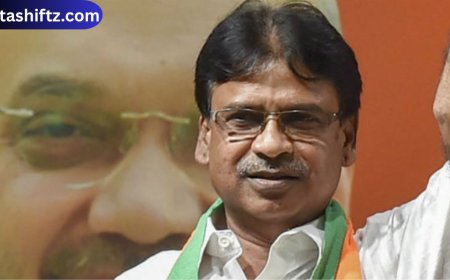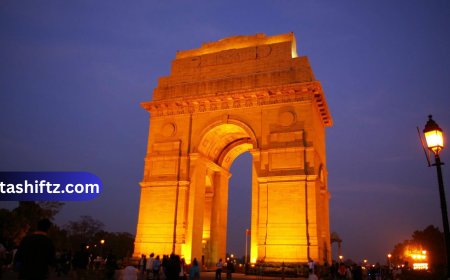De-escalation Between India and Pakistan: Pathways to Peace in South Asia
Introduction
India and Pakistan, two neighboring nuclear-armed countries, share a long history of conflict rooted in the Partition of 1947. From wars to proxy conflicts and diplomatic standoffs, the subcontinent has witnessed decades of instability. However, amid the turbulence, moments of de-escalation and diplomacy have offered glimpses of hope. These periods not only help prevent war but also create space for dialogue, trade, and regional cooperation.
This article explores the meaning, significance, and key mechanisms of de-escalation between India and Pakistan, examining historical examples, diplomatic strategies, and the role of international mediation.
Understanding De-escalation in India-Pakistan Relations
What Is De-escalation?
De-escalation refers to the process of reducing the intensity of conflict or tension between parties—often involving diplomatic communication, military restraint, and confidence-building measures (CBMs). In the context of India and Pakistan, it includes halting military activities near the Line of Control (LoC), restoring diplomatic ties, restarting trade, or renewing cultural and humanitarian engagements.
Historical Context of Conflict and Peace
Since 1947, India and Pakistan have fought four major wars and engaged in countless cross-border skirmishes. Yet, in each decade, attempts have been made to cool tensions, especially following major flare-ups.
Table: Key Incidents and De-escalation Efforts
| Year | Incident/Conflict | De-escalation Measure or Outcome |
|---|---|---|
| 1971 | Indo-Pak war, creation of Bangladesh | Simla Agreement (1972) – Bilateral diplomacy re-established |
| 1999 | Kargil Conflict | US-led diplomatic pressure, Pakistan withdrew |
| 2001 | Indian Parliament attack | Military standoff eased via international diplomacy |
| 2008 | Mumbai terror attacks | Composite dialogue suspended; backchannel talks resumed |
| 2016 | Uri attack and Indian surgical strikes | Diplomatic tensions; no major escalation |
| 2019 | Pulwama attack and Balakot air strikes | Pakistan released captured Indian pilot, easing tensions |
| 2021 | LoC ceasefire agreement reaffirmed | Both sides agreed to halt cross-border firing |
Key Channels of De-escalation
1. Diplomatic Dialogue
Engaging through formal diplomatic channels remains the cornerstone of de-escalation. Whether it is Track I diplomacy (government to government) or Track II diplomacy (non-official dialogues), these talks help break impasses.
Examples:
-
Simla Agreement (1972): Signed after the 1971 war, it emphasized resolving issues bilaterally.
-
Agra Summit (2001) and Sharm El-Sheikh (2009): Though outcomes were limited, these summits provided forums for dialogue.
2. Military Hotlines and DGMO Talks
India and Pakistan maintain a hotline between their Directors General of Military Operations (DGMO) to communicate during border incidents. These conversations are crucial in preventing miscalculation and accidental escalation.
3. Confidence-Building Measures (CBMs)
CBMs include steps like:
-
Releasing civilian prisoners and fishermen.
-
Notifying missile tests in advance.
-
Holding bilateral cultural or sporting events.
-
Offering medical visas.
Such gestures serve as symbolic and practical means to reduce hostility.
List: Major CBMs Undertaken by India and Pakistan
-
LoC Ceasefire Agreements (2003, reaffirmed in 2021)
-
Bus services between Srinagar and Muzaffarabad (started in 2005)
-
Samjhauta Express train service between Delhi and Lahore
-
Trade across LoC in Jammu & Kashmir (suspended in 2019)
-
Kartarpur Corridor (opened in 2019 for Sikh pilgrims)
Challenges to De-escalation
Despite multiple initiatives, several structural and political factors complicate sustained peace.
1. Kashmir Dispute
The primary bone of contention remains Jammu and Kashmir. Any incident in this region can rapidly escalate into a larger military or diplomatic standoff.
2. Terrorism and Non-State Actors
Attacks like those in Mumbai (2008) or Pulwama (2019), traced back to groups operating from Pakistan, significantly undermine de-escalation efforts.
3. Media and Public Sentiment
Both Indian and Pakistani media often promote nationalistic narratives, fueling public pressure against reconciliation. Escalation is sometimes politically rewarded, especially during election cycles.
4. Lack of Political Continuity
Peace processes often suffer due to leadership changes or shifts in national policy priorities. What one government initiates, another may abandon or reverse.
The Role of International Mediation
While both India and Pakistan officially prefer bilateral dialogue, third-party nations and organizations have often played indirect roles in de-escalation.
Key Actors
-
United States: Played a pivotal role during the Kargil War (1999) and 2001–2002 military standoff.
-
China: Though a strategic ally of Pakistan, it occasionally calls for restraint on both sides.
-
United Nations: Though its role is largely symbolic, it monitors ceasefire violations along the LoC.
Recent Developments and Hopes for the Future
2021 Ceasefire Agreement
In February 2021, the two countries reaffirmed the 2003 ceasefire agreement, which drastically reduced cross-border firing incidents. This agreement followed backchannel talks reportedly facilitated by neutral actors in the Gulf.
People-to-People Engagements
Despite political differences, there is a growing voice on both sides calling for cultural and humanitarian exchanges to continue. Artists, sportspersons, and civil society activists frequently advocate for normalized relations.
List: Areas with Potential for Cooperation
-
Climate Change and Water Sharing (Indus Waters Treaty)
-
Trade and Economic Exchange
-
Public Health Collaboration (e.g., COVID-19 response)
-
Counter-Terrorism and Intelligence Sharing
-
Tourism and Religious Pilgrimage Corridors
What Needs to Be Done?
1. Institutionalizing Peace Talks
Rather than relying on reactive diplomacy, both nations need a structured and ongoing dialogue mechanism, regardless of temporary tensions.
2. Reducing Media Hostility
Media organizations on both sides should be encouraged to promote balanced coverage and counter propaganda that fuels hate.
3. Civilian Leadership and Regional Vision
A long-term peace process requires bold political leadership willing to take risks. Civil society, business leaders, and academics should also be included in peace-building processes.
Conclusion
De-escalation between India and Pakistan is not just about avoiding war—it’s about building a future where dialogue replaces distrust, and cooperation replaces conflict. While the road to lasting peace is fraught with obstacles, history has shown that even the deepest divides can be bridged through diplomacy, trust-building, and sustained engagement.
As both nations navigate the 21st century, the choice is clear: either remain prisoners of the past or become architects of a peaceful future. The tools for de-escalation exist; what’s needed is the political will to use them wisely.




























